Dec 23, 2025
Dec 23, 2025
I was first introduced to the concept of bird watching or birding more than a couple of decades ago in the lush green forests of the Anamalai wildlife sanctuary in southern India. Upon spotting a feathered species each time, the sheer excitement made me realize that an urban dweller engrossed in one's daily routine was completely oblivious to the beauty of nature! As the years rolled by, this urban dweller was drawn more and more into the deep abyss of life, and although the soul was willing, found little or no time for bird watching until recently. Although I did not have a Field Guide specific to the region, which is a must for every serious birder, I would go back to my notes and pictures and compare them against references for a complete identification of the tropical birds which are so unique to this part of the hemisphere. Needless to say there are a dozen or so hummingbird species alone in Costa Rica which is truly a bird lover's paradise for these tiny species. With little effort you could easily see these species everywhere and watching them go about their routine was truly marvelous. I spotted quite a few species such as the Green Brilliant hummingbird hovering effortlessly in front of a flower and others such as the Volcano hummingbird and the Buff bellied hummingbird. The most gratifying moment was when I noticed a Rufous-tailed hummingbird at the foot of the Arenal volcano as it was peacefully relaxing on a bush amidst overcast skies and a faint drizzle. This place is truly hummingbird paradise. Hummingbirds typically weigh approximately 3 grams and depending on the species can vary anywhere from 3-4 inches in length. The diversity of flora and fauna in Costa Rica is a haven for common as well as exotic birds. I spotted several Social Flycatchers which were resplendent in their lustrous yellow coats and looked majestic as they would glide and perch on a bush or a banana plant. And watching a Tropical Kingbird sitting gracefully in the high altitudes of the cloud forest was truly magical. Waking up to the sound of birds in Rio Sarapiqui was both tranquil and sublime and I trotted off along the riverside to catch the first glimpse of what were two Northern Jacanas foraging for food along the banks. After following their trail for a while, I came upon a couple of Cattle Egrets perched blissfully on a branch along the river basking in the first rays of dawn. In summer when I passed the place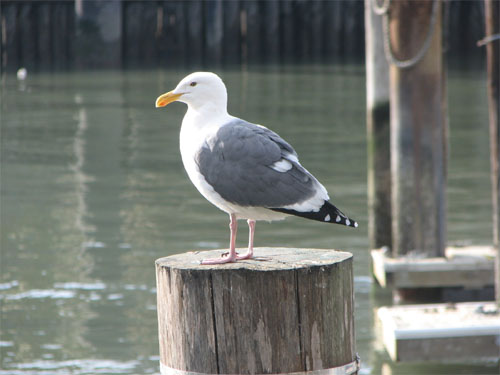
Western Gull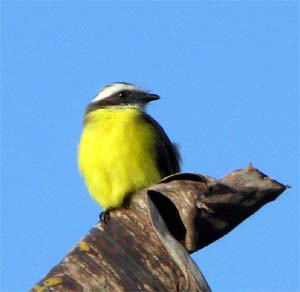 On a trip to the tropics of Costa Rica, it was hard to miss these beauties no matter where you went. Luckily I had a pair of decent binoculars and very quickly got into the act of birding taking copious notes every time I saw a flycatcheror a hummingbird.
On a trip to the tropics of Costa Rica, it was hard to miss these beauties no matter where you went. Luckily I had a pair of decent binoculars and very quickly got into the act of birding taking copious notes every time I saw a flycatcheror a hummingbird.
Humming Bird
In spite of such an unbelievably rich and varied multicolored species of birds including the elusive Quetzal, the national bird of Costa Rica is the common Clay colored Robin.
Once you get hooked onto the fine art of bird watching, it can get very addictive and you begin to appreciate the music in the air! It is easy to dismiss these puny winged creatures that are way below on the pecking order, but when you discover that a mere sparrow is but one of a couple dozen such species, your eyes open wide to a whole new world.
While Palo Alto is the birthplace of Silicon Valley, the Bay Area is home to a significant number of birds. A trip to the Palo Alto Baylands was indeed exhilarating on a fine December morning. The hiking trails here are excellent and the viewing areas afford a superb view of the bay which attests to the diversity of birdlife and the ecosystem in general. American Coots and Shovelers were aplenty frolicking in the bay in the midst of Western Gulls.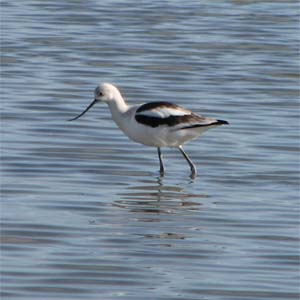 Watching an American Avocetsifting the water with its long curved beak to catch food is indeed fascinating. A little later while watching an entire group of male and female Northern Shovelers, a beautiful white Pelican glided effortlessly and waded into the bay. Bird habitats can vary greatly and while one may be familiar with birds east of the Rockies, identifying western birds can be a challenge and fun. It was easy to spot birds like the Oregon Junco or the Western Scrub Jay and the chestnut backed Chickadee.
Watching an American Avocetsifting the water with its long curved beak to catch food is indeed fascinating. A little later while watching an entire group of male and female Northern Shovelers, a beautiful white Pelican glided effortlessly and waded into the bay. Bird habitats can vary greatly and while one may be familiar with birds east of the Rockies, identifying western birds can be a challenge and fun. It was easy to spot birds like the Oregon Junco or the Western Scrub Jay and the chestnut backed Chickadee.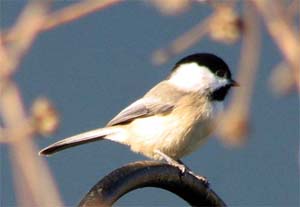 A little down south, driving along the 17-Mile drive on the Pacific coast near Monterey gives the birder ample opportunities to stop and admire sea birds such as Brandt's cormorants and Western Gulls that fly over sea otters that lazily float around in the waters and also to look for warblers and Black-chinned hummingbirds in the lush vegetation on Pebble Beach. Further up North along Route 1, a quick stop at Moss Landing which at first seems like an unusual place for birds, especially with the backdrop of a power plant is worth every minute. The sheer number of waders such as Dowitchers, Marbled Godwits, Willets and Gulls is enough to fill the heart with joy and you get completely absorbed observing these different species.
A little down south, driving along the 17-Mile drive on the Pacific coast near Monterey gives the birder ample opportunities to stop and admire sea birds such as Brandt's cormorants and Western Gulls that fly over sea otters that lazily float around in the waters and also to look for warblers and Black-chinned hummingbirds in the lush vegetation on Pebble Beach. Further up North along Route 1, a quick stop at Moss Landing which at first seems like an unusual place for birds, especially with the backdrop of a power plant is worth every minute. The sheer number of waders such as Dowitchers, Marbled Godwits, Willets and Gulls is enough to fill the heart with joy and you get completely absorbed observing these different species.
According to the US Fish and Wildlife bird watching has morphed into one of the most popular hobbies, with an estimated 50 million Americans taking to this activity. While not everyone may take to the woods armed with birding equipment to look for the elusive Ivory woodpecker, most of them enjoy watching birds at their backyard feeders. A good field guide can go a long way into educating the novice birder not just on identification of different species but also gives ample information on habitats and feeding habits. There are plenty of modern field guides and other books of interest available to the interested birder. I recently got a 1939 edition of Roger Tory Peterson's 'A Field Guide to Birds' (the 1934 first edition is hard to find) and it is an absolute gem not just in its lucid description of the art of bird watching, but in its equally impressive illustrations. Peterson is considered one of the pioneers of modern day bird watching and was a great naturalist, artist and educator. The Audubon Society does phenomenal work to protect, preserve and track birds, and educate the general public on the importance of conservation and the implications of human activities on our ecosystems. The Cornell Lab of Ornithology has an excellent website for birding basics.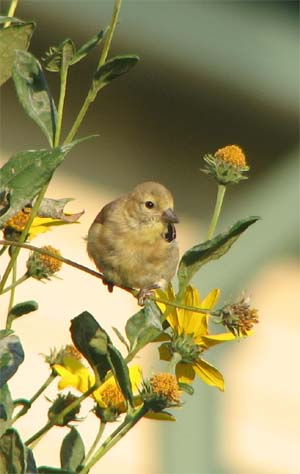 Although most birds migrate to warmer climates south of the border during winter, it is not uncommon to see birds such as the American Goldfinch and Carolina Chickadee in Indiana during that time. And talking about bird migrations, one of the largest migrations that occur is among Sandhill cranes which make a stopover at the Jasper and Pulaski County wildlife preserve in Northern Indiana every Fall on their way to the southern border. They congregate for a few weeks among the cornfields and swell in number anywhere from 10,000 to 15,000. Watching them take off in flight and glide back towards the corn fields is one of the most spectacular sights. Eventually they return again in Spring as they head north to the upper mid-west and Canada. Bird plumages can vary so much between seasons as they shed their colorful feathers that one has to be careful not to misidentify them. The male American Goldfinch has an absolutely dazzling yellow plumage although the female species is somewhat dull. As winter approaches, the goldfinch sheds its plumage to quite an unattractive color and can be mistaken for another species.
Although most birds migrate to warmer climates south of the border during winter, it is not uncommon to see birds such as the American Goldfinch and Carolina Chickadee in Indiana during that time. And talking about bird migrations, one of the largest migrations that occur is among Sandhill cranes which make a stopover at the Jasper and Pulaski County wildlife preserve in Northern Indiana every Fall on their way to the southern border. They congregate for a few weeks among the cornfields and swell in number anywhere from 10,000 to 15,000. Watching them take off in flight and glide back towards the corn fields is one of the most spectacular sights. Eventually they return again in Spring as they head north to the upper mid-west and Canada. Bird plumages can vary so much between seasons as they shed their colorful feathers that one has to be careful not to misidentify them. The male American Goldfinch has an absolutely dazzling yellow plumage although the female species is somewhat dull. As winter approaches, the goldfinch sheds its plumage to quite an unattractive color and can be mistaken for another species.
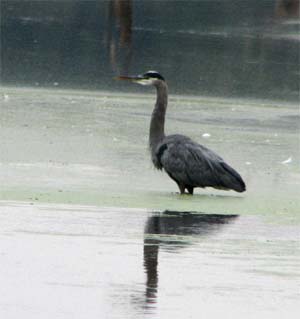 A hike in the Celery Bog in Indiana on a crisp Fall morning is highly rejuvenating and an ideal location to spot both land birds and waders. Tracking down a Green Heron that is often reclusive and meditative can be truly rewarding. Or watching an elegant Great Blue Heron fishing in the marsh can be totally captivating. It is indeed mesmerizing to watch the White-breasted Nuthatch walking upside down a tree. As you follow the Purple Martin soar up high in the skies, you wish you could do the same until you are distracted by the call of the attractive Indigo bunting that is such a treat to watch. Warblers are one of the most difficult to spot and identify but they are also one of the most beautiful species and highly restless too. By the time you spot one of them and raise your binoculars to your eyes, they have disappeared, although I have managed to photograph at least one yellow-rumped warbler. Expert birders can identify a warbler by listening to the sound it makes! Now the woodpecker makes quite a sound that you cannot miss hearing it although distinguishing between a Downy and Hairy woodpecker can be challenging. It is amazing how by mid-October most of the birds have disappeared from the Celery Bog leaving the place to the wild cacophony of the Canadian Geese which find it a true haven to brave and enjoy the bitter cold winter. As I eagerly look forward to spring and await the return of these wonderful creatures, Robert Frost's lines come to mind,
A hike in the Celery Bog in Indiana on a crisp Fall morning is highly rejuvenating and an ideal location to spot both land birds and waders. Tracking down a Green Heron that is often reclusive and meditative can be truly rewarding. Or watching an elegant Great Blue Heron fishing in the marsh can be totally captivating. It is indeed mesmerizing to watch the White-breasted Nuthatch walking upside down a tree. As you follow the Purple Martin soar up high in the skies, you wish you could do the same until you are distracted by the call of the attractive Indigo bunting that is such a treat to watch. Warblers are one of the most difficult to spot and identify but they are also one of the most beautiful species and highly restless too. By the time you spot one of them and raise your binoculars to your eyes, they have disappeared, although I have managed to photograph at least one yellow-rumped warbler. Expert birders can identify a warbler by listening to the sound it makes! Now the woodpecker makes quite a sound that you cannot miss hearing it although distinguishing between a Downy and Hairy woodpecker can be challenging. It is amazing how by mid-October most of the birds have disappeared from the Celery Bog leaving the place to the wild cacophony of the Canadian Geese which find it a true haven to brave and enjoy the bitter cold winter. As I eagerly look forward to spring and await the return of these wonderful creatures, Robert Frost's lines come to mind,
I had to stop and lift my face
A bird with an angelic gift
Was singing in it sweet and swift.
16-Mar-2008
More by : Subra Narayan

|
This note about birds is quite intriguing regarding the watching of birds and its many parts. It is fascinating to know how many birds can be seen in different areas! |